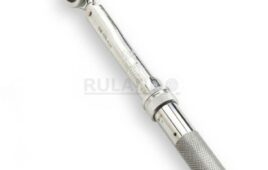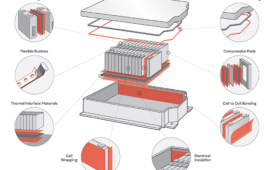Written by Jody Muelaner

A knuckle joint is a form of pin joint that’s used to transmit tension loads while allowing rotation in one plane.
A knuckle joint is a type of pin joint used to join two components that are loaded in tension. One component has a fork with a hole passing through both sides, forming a double eye, while the other component has a single eye.
The single eye is inserted between the double eyes so that all three holes are concentric and a pin is used to secure the components.
Knuckle joints are often used to connect rods subjected to tension in structures such as roof ties, bridges, and cranes. The links of a chain are also considered a series of knuckle joints.
Simplicity means that knuckle joints are easily manufactured while being strong and rigid under tension loads. They’re also easily assembled and disassembled. The ability to allow some rotation can be advantageous in truss structures as this ensures that the structural members remain in a pure tension load and are not subjected to bending moments, which could increase stress.
In this regard, it may be a disadvantage that the joint only permits angular motion in a single plane.
A knuckle joint always has a fork end, an eye end, and a pin. Typically, these are all specially made parts although standard rod ends are sometimes used for the eye end. This has the advantage that a rod end allows some additional rotational movement perpendicular to the pin axis, providing further protection against bending stress.
Various types of pins can also be used. The most common is a special pin with a shoulder at one end and a cross hole at the other to accept a collar and split pint. For large structures, such as bridges, cold rivets were historically used. The pivot may also be bolted.
A knuckle joint forms a type of one degree of freedom (1-DOF) kinematic pair known as a revolute joint, or a pin joint. This means that it allows only relative rotation about a single axis. All translations as well as rotations about any other axis are prevented. Other names for this type of joint are a pivot point, when analyzing motion in two dimensions, or a hinge.





Tell Us What You Think!